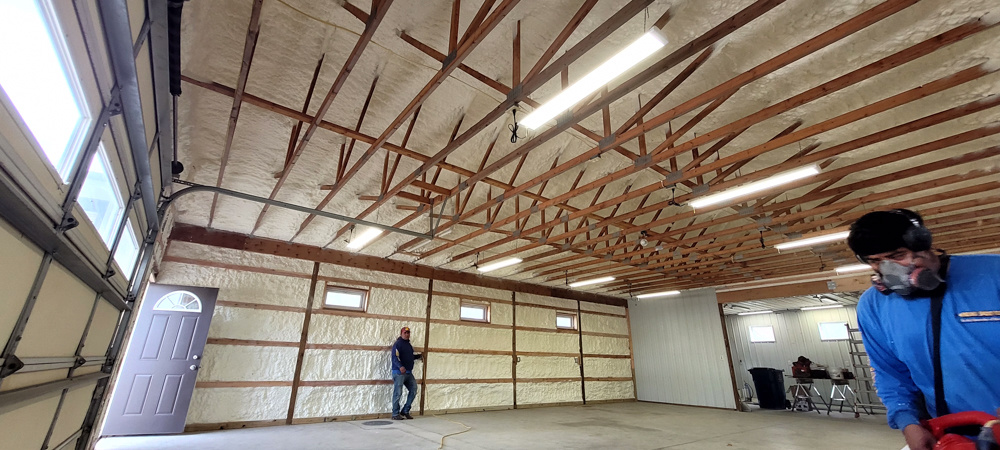Search for topics or resources
Enter your search below and hit enter or click the search icon.
March 23rd, 2025
3 min read

Spray foam insulation has become a popular choice for homeowners who want to improve their home's energy efficiency. This material is known for its excellent air-sealing abilities and high R-value, which means it insulates well and can help keep utility bills low. But if you've been researching spray foam, you may have come across the term "off-gassing." So, what exactly is off-gassing, and should it be a concern? Let’s break down the basics and help you understand what it means for your home and health.
Off-gassing is the release of chemicals from materials into the air. Lots of common construction materials and products inside homes have off-gassing, this includes OSB, carpets, paints, lacquers, furniture, and many more items including spray foam. Like many of the construction materials listed above, spray foam insulation contains components called volatile organic compounds (VOCs).
Off-gassing happens when gases are released as the foam cures. These gases are a normal part of the foam curing process. When first applied, spray foam may have a noticeable odor as the VOCs escape into the air. This is most noticeable during the installation process and in the hours immediately afterward.
This is one of the key reasons that spray foam job sites should be vacant during application and why they should be vented during and immediately after application.
The duration of off-gassing depends on several factors, including the type of spray foam used and the ventilation in the area. Generally, spray foam takes between 24 and 72 hours to fully cure, meaning most of the off-gassing happens during that time.
Once the spray foam is fully cured, the off-gassing drops to a very low level and is typically considered safe for occupancy. Most professionals recommend waiting at least 24 hours before re-entering a home where spray foam insulation has been applied.
The short answer is that it can be if exposure is prolonged or if the installation isn’t done properly. However, most of the time, following basic safety precautions can minimize any risk. Off-gassing can sometimes cause temporary symptoms, especially for people who are sensitive to VOCs. These symptoms may include:
However, after spray foam insulation is fully cured, off-gassing is typically low enough that it no longer poses a significant risk to health. If you have concerns, make sure to talk to your insulation contractor about the specific type of spray foam they’re using and any precautions you should take.
If you’re considering spray foam insulation, there are a few steps you can take to minimize the impact of off-gassing:
While off-gassing is a natural part of the spray foam insulation process, understanding what to expect can help you prepare and make informed decisions. By working with a reputable contractor, following safety guidelines, and allowing proper curing time, you can safely enjoy the many benefits of spray foam insulation—like energy savings, comfort, and moisture control—without worry.
If you still have questions about off-gassing or want more information on spray foam insulation, give us a call. We can help answer your questions, assess your needs, and ensure that your home is both safe and efficient.
Topics: